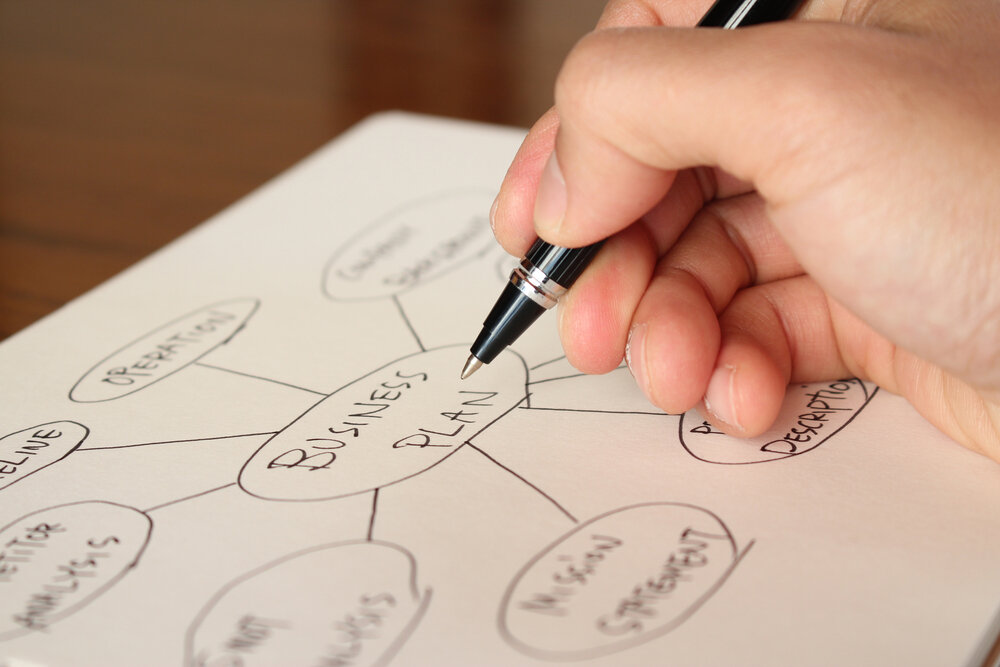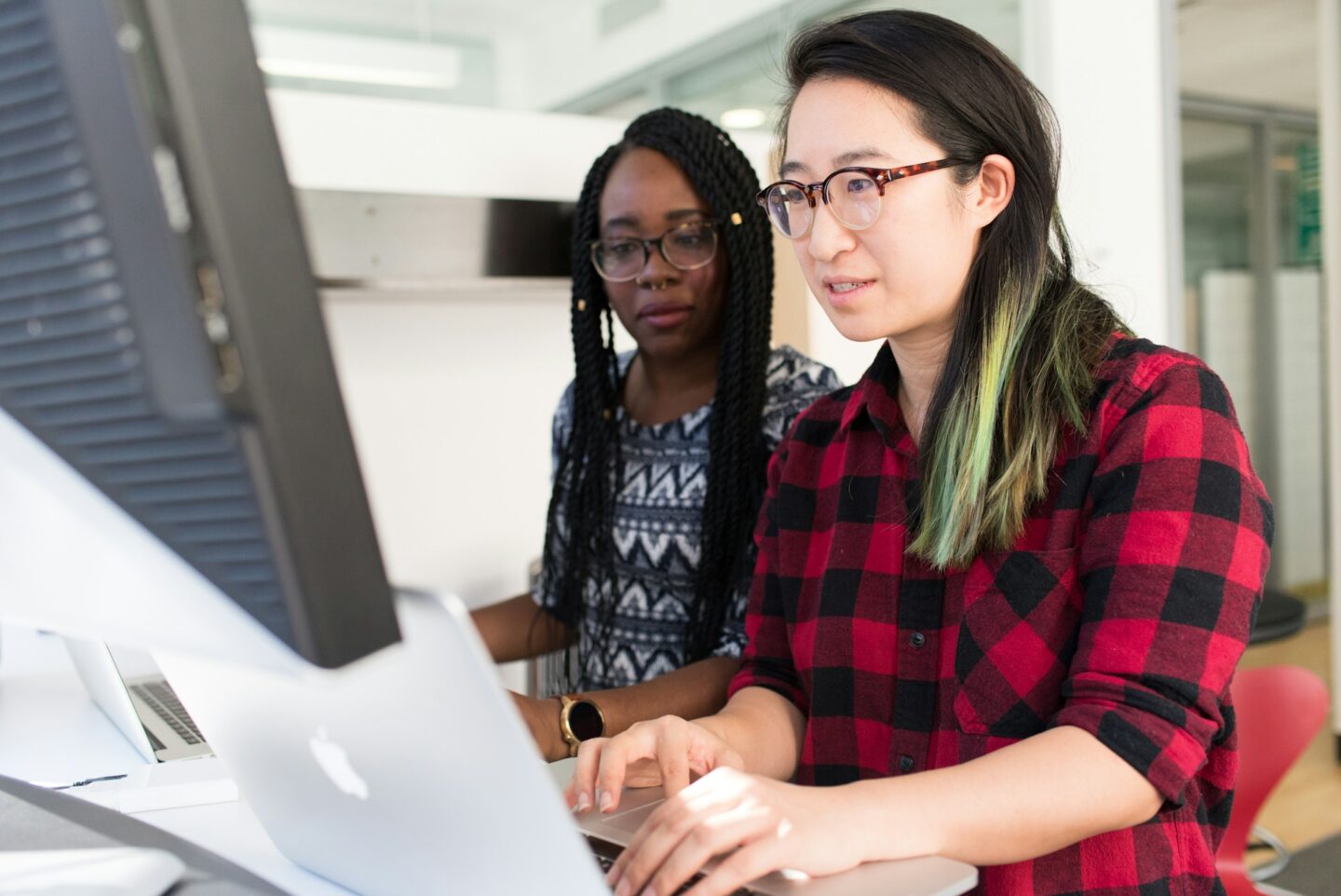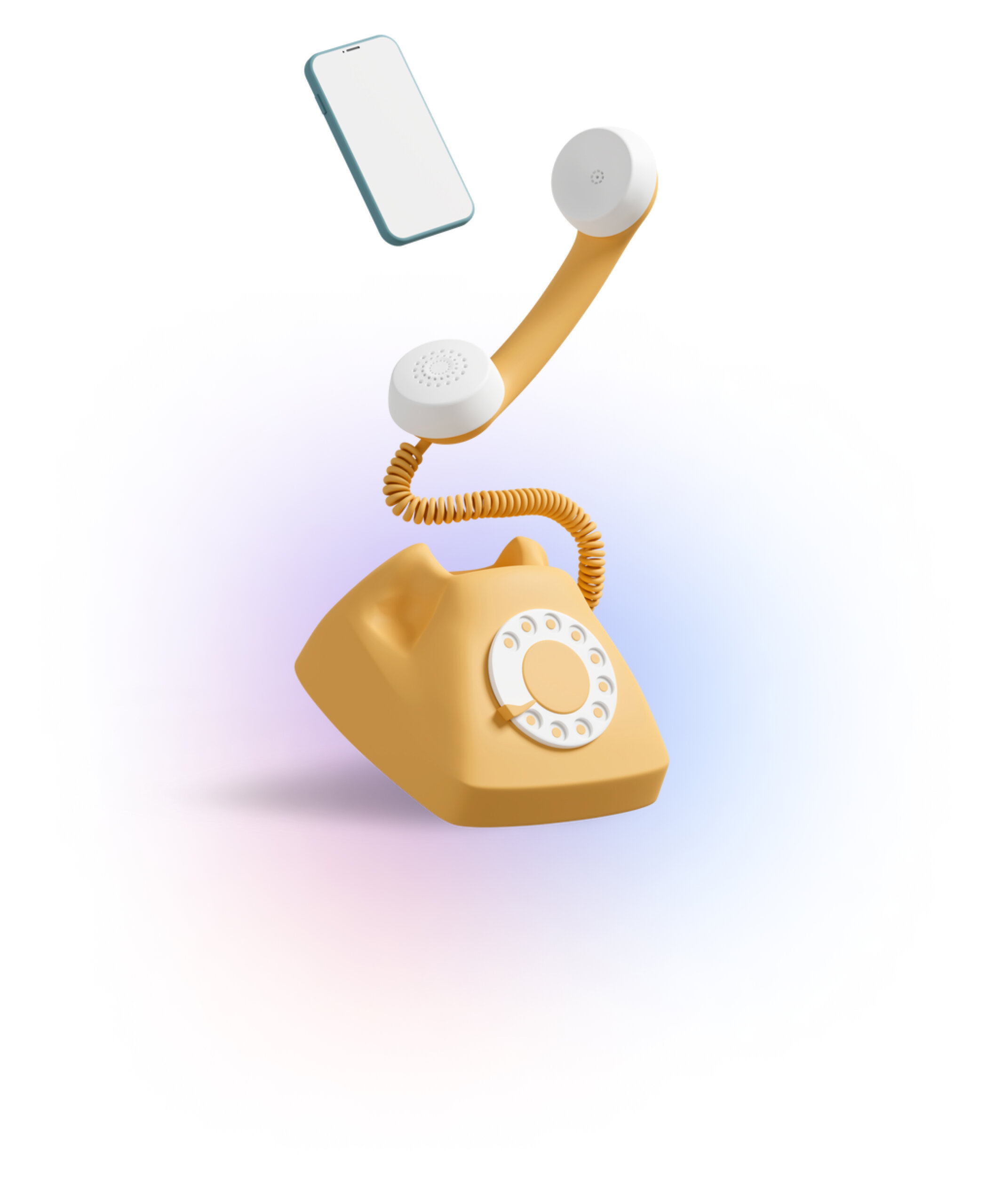
☝️ The most important facts in brief
- Choosing the right learning method increases learning success and makes exam preparation easier.
- Effective learning methods are adapted to the individual learning type and use various techniques such as visualisation or flashcards.
- Time management and a well-structured study plan are essential for studying without unnecessary stress.
- The combination of several learning methods can make the learning process much more effective and ensures that what you have learnt is anchored in your memory in the long term.
📖 Table of contents
Learning methods are techniques that aim to enable students to absorb and retain information effectively. The chosen method must always suit the type of learner in order to be truly effective. A personalised learning plan and summarising what you have learned in your own words increase your learning success and help you not to lose track of the subject matter, especially during the exam phase.
Are you interested in studying medicine?
We will be happy to advise you free of charge about your options for studying medicine, including advice on studying medicine in another EU country, which is fully recognised in Germany.

Together for success - futuredoctor and studying medicine abroad
Would you like to Study medicine abroad and are looking for the most suitable university for you and don't really know where to start looking for a suitable country and a good university? futuredoctor will be happy to support you!
In addition to the Student counselling In addition to selecting the university and accompanying you to the desired on-site appointments, futuredoctor also offers support during the application process and preparation for possible aptitude tests and subsequent orientation at the place of study - right through to finding accommodation! Get your Free information pack!
10 effective learning techniques for students
Effective learning depends on the right Learning method on. With the right learning techniques, the learning process is much faster and you can retain the material you have learnt better. Depending on whether you still have a lot of time to prepare for upcoming exams and oral exams or whether you are already in the middle of the exam phase, you will need strategies and learning methods that suit you and your current situation. We now present the top 10 learning techniques that have proven successful for many students and that you can use to optimise your knowledge for the upcoming exams and beyond.
1) The SQ3R method
The SQ3R method is one of the best learning methods that helps students to understand texts thoroughly and retain information in their heads over the long term. It is divided into five steps:
- Survey (overview)
- Question
- Read
- Recite (Replay)
- Review.
Firstly, you need to get an overview of the subject matter. In the next step, you formulate questions about the content. While reading, you look for answers to these questions. You then summarise what you have read in your own words. Finally, you check your knowledge. This technique improves effective learning, especially in the exam phase, and gives you a sensible structure.
2) The loci method
The loci method, also known as the place memory technique, is an effective learning method that is based on visualisation, among other things. With this technique, you link learning content with places that you are familiar with.
You imagine a route on which you "file" certain information at various points. While you are learning, you follow the route in your mind and recall the content you have stored. The loci method helps you to memorise difficult material for exams more easily and achieve your learning goal more quickly. It is particularly useful for visual learners, but this is not exclusively the case.
Learning with all senses
You can link far more than just visual impressions with the places you walk through in your mind. Ears, sense of smell, emotions and much more can also be incorporated here if required, making this learning method so effective.
3) The memory palace (Sherlock Holmes method)
The memory palace, known from Sherlock Holmes, is a powerful learning method for complex subject matter. You create a house or virtual palace in your head, in which each room is linked to a topic of your studies. You then place mental images in these rooms that represent the relevant information.
The images in this learning method should be vivid and unusual so that they are easier to remember. If you want to remember a certain content, go through your memory palace in your mind and find the information in the place assigned to it.
Memory palace and loci technique are related learning methods
Just like the loci method, the memory palace helps you to structure knowledge in a way that can be recalled.
4) Learning through teaching
One of the most effective ways to really embed learning content in your brain is to explain it to other people. Only if you have really understood everything well will you be able to convey it to someone who does not yet know the content in question.
When using this learning technique, you are virtually forced to structure the information in a meaningful way and explain complex relationships simply. "Learning by teaching" can be used well in learning groups. It is also very effective if you pass on your knowledge to someone who is not a specialist. Perhaps you have interested people around you who are even happy to hear you explain interesting things and thus automatically support you in learning effectively.
"Teaching" even without an audience
Even if no one is available to explain your learning content to, you don't have to do without the "learning by teaching" method: Simply imagine someone to whom you are explaining the subject matter. For example, you could imagine yourself as a teacher at a school or take on the job of your lecturer at university. Many students find this learning method helps them to stand in front of a mirror and watch themselves talk.
5) Writing summaries
Writing summaries is one of the best learning methods for many students. Creating such summaries independently helps you to extract the most important information from a larger text and condense it to the essentials.
The process of writing helps you to understand the subject matter and memorise the key points. With this learning method, you read the text and then write a short, concise summary. For example, you can try to summarise each page or chapter of a book in a few sentences.
Summaries are a good learning technique with structure
Formulating your own summaries challenges you to really grasp the content. Summaries are also ideal for preparing for exams, as they provide a quick overview of the content you have learnt. By re-reading what you have written later, you can work through and internalise the material again before the exam.
6) Create a mind map
Mind maps are an effective tool for structuring learning material and gaining an overview. When creating a mind map, you start with a central topic in the centre and add key terms or ideas in the form of branches. This learning method visualises connections and hierarchies of knowledge.
Mind maps are a learning method for the whole brain
Mind maps are one of the best learning methods for some people at school and university because they utilise both hemispheres of the brain. They are particularly useful when preparing for exams as they allow you to collect complex information on one page and quickly grasp it. This allows you to learn effectively and successfully.

7) Learning with index cards
Flashcards are another classic among the best learning methods. They enable effective learning of clearly defined content within a comparatively short learning time.
You write a question or keyword on the front of the flashcards and the answer or explanation on the back. When working with this learning method, you can then shuffle the flashcards and work through them one by one. If you were able to answer a question correctly, put the card in a different compartment of your card box from the cards where there was still a problem and the knowledge needs to be deepened again. This way, you can repeat the information that you weren't sure about in the next round without making any changes to the learning plan.
Flashcards as a quick way to consolidate what you have learnt
By repeatedly going through the flashcards, the learning material is memorised and the brain learns to recall answers quickly. This learning method is particularly suitable for learning vocabulary or facts that need to be memorised.
8) Mnemonic bridges
How do medical students memorise the bones of the hand? For generations with the sentence: "A barge that travelled in the moonlight in a triangle around the pea bone. A large polygon, a small polygon, the head must be on the hook."
The text is memorable and therefore remains reliably in your brain. Once you have memorised it, you can also recall the 8 carpal bones in the correct order:
- Navicular bone
- Moon leg
- Triangular leg
- Pea leg
- Large polygonal leg
- small polygonal leg
- Capitate
- Hook leg
You can memorise certain names and sequences easily with these and many other mnemonic devices. However, mnemonics rarely help you to understand the content, which is why they are not really a learning method in their own right, but can only ever be a supplement to other learning methods.
Make up your own mnemonic bridges!
By developing your own mnemonic devices, you automatically engage with the learning objective and can ultimately memorise what is important both with and without a mnemonic device.
9) Learning with old exams
In many degree programmes, old exams are one of the best ways to prepare for upcoming tests. By looking at old exam questions and solving them, you will get a feel for the style and difficulty of the tasks.
This learning method helps you to recognise and close gaps in your knowledge. It also trains your brain to recall information under exam conditions. Effective learning with exam questions from past exams is one of the learning methods that can significantly reduce stress during the exam, as you already know roughly what to expect.
Old exams do not fully convey the exam material
Integrate old exams into your study plan early on to ensure that you have mastered all the course content by the day of the exam. This will improve your chances of success in the exam. At the same time, be aware that every exam is created from scratch. Preparations with old exams are therefore really only intended to give you an overview and not to ensure that you already know the specific questions in the new exam.
10) E-learning
E-learning has revolutionised the world of learning methods. There are numerous online offerings with which you can learn and acquire knowledge.
We at futuredoctor have also recognised the potential of digital education. We therefore support students who apply to universities in other European countries with our help and prepare for the entrance exam there with an innovative learning app. This contains numerous explanations, tips and videos that present complex learning content in a way that is easy to understand and prepares them perfectly for the test.
We also continue to support our customers during their studies if required.
Digital learning methods are well suited for travelling
With digital learning on a computer, tablet or smartphone, you can prepare yourself well in every semester and in every learning phase. Learning on a smartphone in particular is becoming increasingly popular, as the learning methods can be used anytime and anywhere. For example, you can quickly complete a short lesson on the bus on the way to university or read interesting tips on learning certain topics.
What type of learner are you?
Not everyone learns in the same way. What is the right learning method for one person may not suit another at all. It is therefore important to know your own learning type and to be able to decide on suitable learning methods based on this. A distinction is usually made between four basic learning types, which we would now like to introduce to you.
It is important that you realise that very few students can be clearly assigned to one learning type. Instead, your own learning type is usually made up of a mixture of the individual types, with some being more pronounced than others. You may therefore simply have to try out different learning methods to find out which one suits you best.
Visual learning type
Visual learners understand and retain information best when it is presented in a visually memorable way. They easily remember pictures, graphics and diagrams. When reading texts, they have the ability to memorise specific pages and the visual structure of information.
For visual learners, exam preparation often indirectly involves remembering the appearance of the material learnt.
Particularly suitable learning methods for visual learners
Mind maps, coloured markers and diagrams are helpful for visual learners. They use these learning methods to emphasise important points and bring structure to their notes. It also helps when learning with index cards if they contain drawings or coloured markings.
Watching videos and visualising important information are also effective methods for people with these learning skills. Creating infographics and drawing concepts help with understanding and memorising the learning material.
Auditory learning type
Auditory learners absorb information most effectively when they hear it. They remember best what has been read to them or what they have heard in lectures. They often talk to themselves while learning or repeat information out loud. These people benefit from hearing content, whether in discussions in learning groups or through spoken explanations. During the learning phase, listening can be more active for them than simply reading text.
Particularly suitable learning methods for auditory learners
Audio books and educational podcasts help auditory learners to deepen their knowledge. They also benefit more from reading a text out loud than if they just read it silently to themselves.
Discussions and group work are particularly suitable for them to deepen the learning content, as they learn by listening and speaking. Self-recorded audio summaries help auditory learners retain the material better. Learning with music provides additional concentration for some people of this learning type.
Haptic learning type / kinaesthetic learning type
People of the haptic or kinaesthetic learning type learn by doing and moving. They understand and retain information best when they are physically active. When learning, they often need a practical application to internalise the material.
When sitting and sitting still, people of these types often find it difficult to focus on the essentials. Instead of simply memorising, they are much better at remembering things that they have done themselves or created with their own hands. Their strength lies in experiencing and experimenting during the learning process.
Particularly suitable learning methods for haptic / kinaesthetic learners
Kinesthetic or haptic learners benefit from learning methods that involve movement. Experiments, building models and role-playing games help them to actively acquire knowledge. If you belong to this type of learner, sitting still at your desk is not for you.
Instead, use tricks such as repeating vocabulary or other content with flashcards while you go for a walk. The loci method described in this article or the memory palace could also be suitable learning methods for you under certain circumstances.
Regardless of the learning method used, always use your hands, for example by taking notes or highlighting certain passages in the text. Concrete practical exercises are ideal when preparing for an exam: role-play the exam, including the movements you make.
Reading/Writing
This type of learner prefers to gather information by reading and writing. These people like to work intensively with texts and record their content in notes.
Long passages of text do not deter reading/writing learners. They store the knowledge they acquire while reading well in their brains and can then recall it better in the exam than people of a different learning type.
Particularly suitable learning methods for reading/writing learners
Literate learners benefit from writing their own texts such as summaries or lists. The table of contents of books is particularly important for these people as they use it as a guide and it is important for them to quickly find the texts relating to the content on the learning plan.
If you belong to this type, don't just limit yourself to reading, but also write down some information that you want to focus on more intensively. One of the most important tips: Make sure you read everything you want to remember and write.
Starting signal
What are you waiting for? 🎉
Order your info pack now, find out more about the Studying medicine abroad and get started as a medical student!





